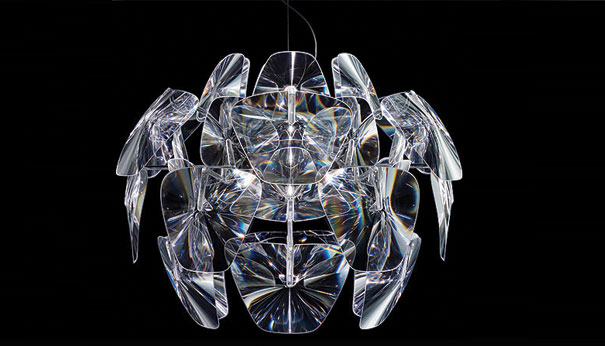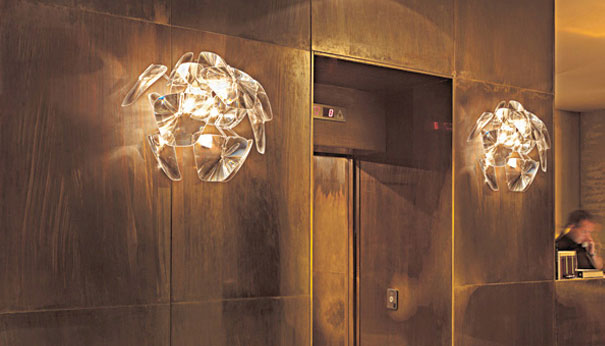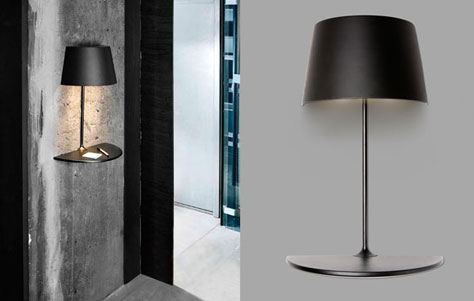Hope by Luceplan
Named after the infamous diamond, Hope intends to dazzle as much as the gem, “recreating a pleasant, glittery and party-like atmosphere, sprinkled with thousands of shards of light.” Hope accomplishes much of the sparkling by using thin polycarbonate Fresnel lenses that intensify the light, “using imprinted microprisms on polycarbonate film to achieve a dioptric effect.” Unlike traditional shimmering lights, Hope does not use glass, a material that impedes some designs due to its weight and thickness. Instead, Hope manages to achieve a gem-like scintillating quality with a new material and manufacturing process.
Hope. Designed by Luceplan.
The layering of the thin Fresnel lenses gives the effect of opalescent scales or of elaborate medieval armor. Available as a wall/ceiling or suspension lamp, Hope is “the fruit of a brilliant project,” conceived by Francisco Gomez Paz and Paolo Rizzatto. Their vision continues the innovative path forged by Luceplan’s three architect founders: Riccardo Sarfatti, Paolo Rizzatto, and Sandra Severi. Since 1978, Luceplan has introduced originative fixtures, including Titania, a kinetic chandelier.





Recently, one of the company’s imperatives has been to design energy-saving lighting, upscale products that use the newest efficient bulbs. Hope maintains the dreamlike splendor of older lamps while looking toward the future: “Incredibly light and easy to assemble, Hope represents the magic of traditional lamps, reinterpreting them with sophisticated technologies and contemporary materials.” A structure of polished stainless steel complements the translucent polycarbonate lenses, so that all of Hope twinkles like tinsel.




Leave a Reply